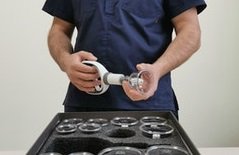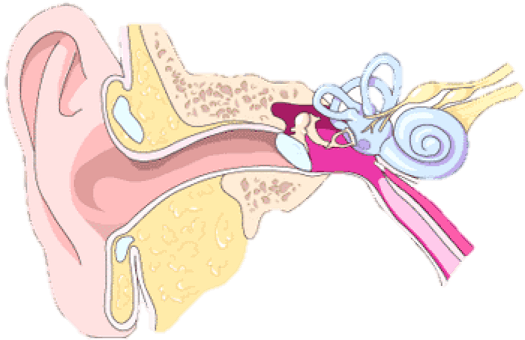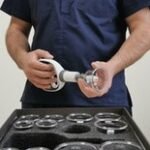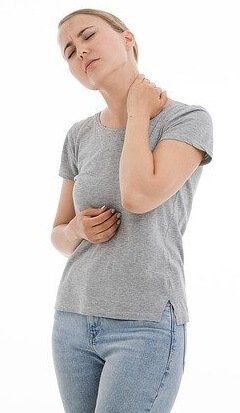Hijama Sunnah Points
Sunnah points of Hijama
The sunnah (historical evidence / traditions of the prophets life) encourages Muslims to seek Hijama (cupping) as a form of preventive medicine, promoting the removal of harmful toxins from the body and promoting better health. There are 9 sunnah points on the body where the Prophet Muhammad (peace be upon him) had hijama performed and a further 2 optional points that can be used to supplement your treatment plans.
Abdullah ibn Abbas reported that the Messenger said,
“I did not pass by an angel from the angels on the night journey except that they all said to me: Upon you is Hijama, Muhammad.”, Sunan Ibn Mājah (Hadith no. 3477)
Nine Sunnah points of Hijama
1. The Head (Yafookh – Crown of the Head)
Refers to the very top of the head (crown), where the skull bones meet. Specifically, it is the soft spot on the skull of a newborn, which hardens in adulthood. In adult cupping therapy, This location refers to the top-most central point of the head. It is anatomically located at the intersection of the sagittal and coronal sutures of the skull and correlates closely with the DU-20 (Baihui) acupuncture point, which is known as the “Hundred Convergences” point. It aligns with both traditional and modern understanding:
-
Direct Access to the Brain: It is the highest point on the body, directly influencing cerebral blood flow and the central nervous system.
-
Major Energetic Point: In traditional Chinese medicine, its correlate (DU-20) is known as a “Yang” point that raises energy and clears the mind. Applying cupping here can help regulate the entire body’s energy.
-
Relief of Cranial Pressure: For severe migraines, it can help by drawing stagnant blood and fluid away from the cranial area, relieving internal pressure.
This point is key to helping with:
-
Severe Headaches and Migraines (Shiqaaq): a severe, splitting headache, often interpreted as a powerful migraine. Hijama on the crown of the head is meant to relieve pressure and improve blood flow to alleviate this intense pain.
-
Poisoning or Suspected Magic (Sihr): The application on the Yafookh for poisoning or witchcraft is based on the concept of drawing out toxins or harmful substances that are affecting the brain and the central nervous system. It acts as a powerful detoxification point for the upper body and mind.
-
Mental and Neurological Conditions: By extension, due to its profound effect on the brain, it has been traditionally used for conditions like forgetfulness, mental confusion, dizziness, and certain psychological ailments.
Evidence:
-
Ibn Buhaynah (RA) reported: “The Prophet ﷺ was cupped in the middle of his head while he was in ihram on the way to Makkah.” – Sahih al-Bukhari (5701)
-
Ibn Abbas (RA) narrated: “The Prophet ﷺ had cupping done on his head due to a migraine, while he was in the state of ihram.” – Sunan Abu Dawood (1836)
2. Base of the Neck / Upper Spine (Qamahduwah / Nape)
The Qamahduwah is a specific point on the upper part of the back, on the nape of the head / neck which is distinct from and above the Kahil. It is consistently described as being at the base of the skull, on the posterior part of the head (the occiput), where the skull ends and the neck begins.
Modern Correlation: This corresponds almost exactly to the modern anatomical location known as the “External Occipital Protuberance” and the surrounding area. In traditional Chinese medicine and modern cupping therapy, this area is a major point (like GV-16 / Fengfu) known for treating head and neurological conditions and physiologically is placed at:
-
Neurological Crossroads: This area is where the brainstem connects to the spinal cord. It is a critical junction for blood flow and nerve signals between the brain and the rest of the body.
-
Major Blood Vessels: The occipital artery and veins are located here, supplying blood to the posterior part of the scalp and brain.
-
Relieving Cranial Pressure: By applying cupping to this point, it is thought to help drain stagnation, improve cerebrospinal fluid flow, and relieve pressure that can cause severe headaches.
In combination with other complimentary points the point helps with:
-
Severe Headaches and Migraines: Especially those originating from tension or vascular issues at the back of the head (occipital headaches).
-
Conditions of the Head and Brain: It was believed to help with issues like mental fatigue, heaviness in the head, and certain eye or ear problems connected to cranial pressure or circulation.
-
Hypertension (High Blood Pressure): As a key point on the “Governor Vessel” meridian, it is used to calm the mind and help regulate blood pressure.
-
Stiffness in the Neck: Due to its location, it can relieve tension in the suboccipital muscles.
Evidence:
-
Ibn Abbas (RA) reported: “The Prophet ﷺ was cupped on the nape (al-Qamahduwah) and on both akhda’ain.” – Abu Dawood (3860), graded Hasan by Albani
3 & 4. The Upper Back (Akhda’ain – Both Sides of the Neck)
Hijama on the Akhda’ain points requires precision and should be performed by an experienced practitioner. These points refer to the two veins on either side of the back of the neck, behind the ears and are in proximity to major blood vessels and vital structures in the neck. They are are the external jugular veins which are visible and accessible in that area. In modern anatomy and cupping therapy, this corresponds to the area at the base of the skull, along the trapezius muscle, targeting the occipital region. It is a key area for relieving tension and improving blood flow to the head as well as helping relieve blood pressure and providing relief for eye and ear disorders.
The medical wisdom behind cupping on this specific location is to:
-
Target the Source of Head Pain: The Akhda’ain are a primary pathway for blood drainage from the head. When there is an excess of blood or “bad blood” in the head, it can cause conditions like migraines, severe headaches, high blood pressure, and inflammation of the tonsils or face.
-
Direct Diversion: A function of hijama on this point is to divert or draw blood away from a deeper part. By drawing blood from these veins in the neck, you are directly and effectively diverting excess blood and pressure away from the head, thereby relieving the symptoms at their source.
-
Contrast with the Kahil: While the Kahil (nape of the neck) is for general, systemic treatment, the Akhda’ain are for a specific, targeted purpose related to head and facial ailments.
Evidence:
-
The Prophet ﷺ said “Indeed the best of remedies you have is cupping… on the akhda’ain and the kaahil.” – Sunan Abu Dawood (3861), Sunan Ibn Majah (3484), classed Sahih
5. The Upper Back (Kaahil – Between the Shoulders)
The central point between the two shoulder blades and refers to the upper back, specifically the nape of the neck. It is the area at the top of the back, between the two shoulders, near the seventh cervical vertebra (C7). This is the bony prominence you feel at the base of your neck when you look down.
This point help strengthen immunity, reduces fatigues and relieves lung / chest congestion. From a physiological perspective the point has various characteristics:
-
Central Junction: A crossroads for nerves, blood vessels, and acupuncture/reflex points that connect to the entire body. It is at the center of the body’s “energy highway.”
-
Drainage Point: A primary site where “bad blood” and metabolic wastes accumulate. Draining this area can have a systemic detoxifying effect.
-
Connection to the Brain: Improving circulation and relieving tension in this area, Hijama can positively affect blood flow to the brain, helping with headaches, mental clarity, and neurological conditions.
Evidence:
- The Prophet ﷺ mentioned the Kahil points along with the Akhda’ain: “Indeed the best of remedies you have is cupping, especially on the akhda’ain and the kahil.” – Sunan Abu Dawood (3861), Sunan Ibn Majah (3484) (Authenticated by Albani)
- Ibn al-Qayyim (رحمه الله) in Zaad al-Ma’ad (4/52) explains that: “The Prophet ﷺ had cupping done on the kahil, which is between the shoulders, and on the two akhda’ain. These are the best points of cupping on the upper body.”
-
The Prophet ﷺ was cupped on the kaahil. – Abu Dawood (3861), Tirmidhi (2051)
6 & 7. Both Hips (Waraq / Warik)
Located on both sides of the hips, near the pelvic bone and helps to treat treat sciatica (leg nerve pain), relieve lower back/hip pain and helps with mobility. The points are located on the upper posterior part of the thigh/hip, near the sciatic notch. It is often described as the area where the sciatic nerve and the major blood vessels (like the superior gluteal vein) pass. Modern Cupping Practice places this point on the upper buttock, just below the iliac crest and near the sacrum. In modern therapies, this is a primary site for treating sciatica and lower back pain. Physiologically the points are of benefit due to:
-
Direct Pathway: The Waraq area is a critical junction where the sciatic nerve—the longest and thickest nerve in the body—passes. Inflammation or pressure at this point causes the widespread pain known as sciatica.
-
Venous Drainage: Applying cupping to this area helps drain stagnant blood and relieve pressure on the nerve and blood vessels, providing direct and rapid relief from the radiating pain.
-
Targeted Treatment: Unlike the Kahil, which is for general wellness, the Waraq points are a perfect example of a specific, targeted treatment for a specific neurological and muscular condition.
And these points can be performed specifically for the following reasons:
-
Pain in the Hip, Leg, and Lower Back: The most direct application is for pain localized to the hip joint, upper thigh, and buttock region.
-
Treatment of Sciatica (Irq an-Nasa): This is the most famous and specific indication. The Waraq points are the primary Prophetic prescription for sciatic nerve pain—the sharp, shooting pain that radiates from the lower back down through the hip and leg.
-
Improving Mobility: By relieving pressure and inflammation on the sciatic nerve and surrounding muscles, this treatment aims to restore mobility and reduce pain in the lower body.
Evidence:
-
Anas ibn Malik (RA) reported: The Prophet ﷺ said: “Cupping on the hips (al-warik) is a cure for sciatica.” – Sunan Abu Dawood (3863), classed Hasan by Albani
8 & 9. The Feet (Dahr al-Qadam – Top of the Feet)
The upper surface of both feet. These points have a positive impact on blood circulation, and detoxing the lower body. They exemplify the principle of applying a remedy directly to the site of pain or injury and were done specifically when the Prophet (ﷺ) was in a state of Ihram (during pilgrimage) and suffered from a pain, a sprain, or a contusion on his foot. While the Kahil is for holistic, whole-body treatment, the Dahr al-Qadam shows the practical, targeted use of Hijama for localized issues. It establishes cupping as an effective treatment for sprains and musculoskeletal pain, and it carries the important legal ruling that seeking medical treatment is permissible even during the spiritual state of Ihram.
Applying cups to the top of the foot is understood to:
-
Increase Blood Flow: Help reduce stagnation and promote healing in a sprained or painful foot.
-
Stimulate Reflex Points: The top of the foot contains reflex points connected to other parts of the body, making it beneficial for more than just local pain.
-
Reduce Inflammation and Swelling: The therapy can help alleviate swelling and inflammation in the ankle and foot region.
Evidence:
-
Anas ibn Malik (RA) said: “The Messenger of Allah ﷺ used to have cupping done on the back of his feet and on the hips.” – Sunan Ibn Majah (3487), graded Hasan by Albani
2 Extra Points
10 & 11. Two Points Below the Shoulder Blades / Upper Back sides (Kahilan)
The “Kahilan” points are not a single point but a symmetrical bilateral pair located on the upper back, just below the shoulder blades, off-center from the Kaahil point. Physiologically these two points are places where:
-
Major Blood Flow: This area is rich with superficial blood vessels from the ascending cervical and transverse cervical arteries. Cupping here stimulates blood circulation to the brain, head, and upper limbs.
-
Nervous System Crossroads: It is a critical junction for the Autonomic Nervous System (sympathetic and parasympathetic). Stimulating this area can help regulate heart rate, digestion, respiratory rate, and stress responses (the “fight or flight” system).
-
Muscular Tension Hub: The trapezius muscle, where the “Kahilan” points are located, is a primary storage site for stress and physical tension. Releasing this area can alleviate headaches, neck pain, and shoulder stiffness.
-
Lymphatic Drainage: The region is key for lymphatic drainage from the head and brain, potentially aiding detoxification.
The points help to improve blood circulation in the upper body, relieve chest congestion, asthma, and respiratory conditions, strengthen the immune system, and reduce stress and fatigue by drawing “stagnant” blood from the upper back:
-
Head and Neurological Conditions: Migraines, chronic headaches, dizziness, brain fog, poor memory, and fatigue.
-
Cardiovascular and Respiratory: High blood pressure, and some symptoms of asthma (by relieving tension in respiratory muscles).
-
Mental and Emotional: Stress, anxiety, insomnia, and depression (often linked to autonomic nervous system dysregulation).
-
Musculoskeletal: Chronic neck and shoulder pain, stiffness, and tension.
-
Immune Function: As a general detoxification and immune-boosting treatment.





